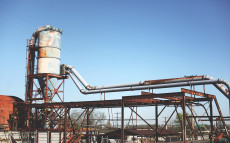- pathfindersAI
- Job Profile
Avionics Technicians
Summary
Avionics Technicians: Navigating the Skies Through Technology
What They Do
Avionics Technicians play a critical role in the aviation industry, ensuring that all electronic systems within an aircraft are functioning optimally. These specialized technicians focus on the electronic instrumentation and controls that are fundamental to an aircraft's performance and safety. From communication and navigation systems to the intricate electrical components that control flight operations, Avionics Technicians serve as the backbone of modern aviation, enabling safe and efficient air travel.
Job Responsibilities
The responsibilities of an Avionics Technician are multifaceted and demand precision and attention to detail. Their primary duties include the installation, inspection, testing, and repair of avionics equipment and systems. Technicians must meticulously examine each component to ensure compliance with aviation standards and regulations. Additionally, they must diagnose and troubleshoot malfunctions, often using sophisticated diagnostic equipment to pinpoint issues. Routine maintenance checks are also a crucial aspect of the job, ensuring that all systems are up-to-date and capable of optimal performance. Furthermore, Avionics Technicians may be involved in the upgrading and retrofitting of older aircraft with state-of-the-art electronics.
Essential Skills
To excel as an Avionics Technician, a combination of technical knowledge and practical skills is indispensable. Proficiency in electronics and a thorough understanding of how various avionics systems interact are crucial. Technicians must be adept at reading and interpreting technical manuals, schematics, and blueprints. Strong problem-solving abilities are essential for diagnosing and addressing system malfunctions effectively. Attention to detail and precision are paramount, given the high stakes involved in aviation safety. Moreover, excellent communication skills are necessary for conveying technical information clearly to other members of the maintenance team and ensuring collaborative efforts in troubleshooting and repairs.
Educational Pathways
Aspiring Avionics Technicians typically begin their journey with a high school diploma, followed by targeted vocational training in avionics technology or a related field. Many pursue an Associate's degree in Avionics Technology, Aviation Maintenance, or Electrical Engineering from accredited technical institutes or community colleges. These programs provide a robust foundation in electronics, aerodynamics, and aviation-specific systems. Additionally, obtaining certification from the Federal Aviation Administration (FAA), such as the Airframe and Powerplant (A&P) license, can significantly enhance employability. Some technicians may also choose to pursue specialized certifications from manufacturers or professional associations, further bolstering their expertise and credentials.
Career Prospects
The career prospects for Avionics Technicians are promising, driven by the ever-increasing reliance on advanced electronic systems in modern aircraft. The demand for skilled technicians is expected to grow steadily, with opportunities available in various sectors, including commercial airlines, private aviation companies, defense contractors, and aerospace manufacturing firms. Technicians with experience and specialized certifications are likely to find enhanced career advancement opportunities, potentially moving into supervisory roles, technical consulting, or even positions in avionics engineering. The dynamic nature of the field, coupled with ongoing technological advancements, ensures that Avionics Technicians remain at the forefront of aviation innovation.
Conclusion
In conclusion, Avionics Technicians are indispensable to the aviation industry, ensuring that aircraft operate safely and efficiently through their expertise in electronic systems. Their role entails a broad range of responsibilities, from installation and maintenance to rigorous testing and troubleshooting. Equipped with essential technical skills and a strong educational background, Avionics Technicians enjoy favorable career prospects in a field marked by continuous growth and technological advancements. For those passionate about aviation technology and safety, a career as an Avionics Technician offers a fulfilling and impactful path.
Video
Compensation
| State | Median Salary | Median Hourly | Positions |
|---|---|---|---|
| AL | 86,980 | 41.82 | 1,310 |
| AK | 63,290 | 30.43 | 140 |
| AZ | 68,540 | 32.95 | 280 |
| CA | 85,320 | 41.02 | 1,880 |
| CO | 82,350 | 39.59 | 260 |
| FL | 72,700 | 34.95 | 1,880 |
| GA | 64,500 | 31.01 | 1,710 |
| HI | 85,840 | 41.27 | 140 |
| ID | 65,410 | 31.45 | 90 |
| IL | 75,670 | 36.38 | 360 |
| IN | 65,190 | 31.34 | 440 |
| IA | 64,750 | 31.13 | 30 |
| KS | * | * | 560 |
| LA | 62,130 | 29.87 | 400 |
| MA | 82,420 | 39.62 | 40 |
| MI | 57,220 | 27.51 | 320 |
| MS | 64,040 | 30.79 | 170 |
| MO | 87,200 | 41.92 | 280 |
| NV | 89,380 | 42.97 | 260 |
| NJ | 80,890 | 38.89 | 150 |
| NM | 55,610 | 26.74 | 40 |
| NY | 71,990 | 34.61 | 40 |
| NC | 60,090 | 28.89 | 550 |
| OH | 63,710 | 30.63 | 180 |
| OK | 63,670 | 30.61 | 430 |
| OR | 76,260 | 36.66 | 120 |
| PA | 91,040 | 43.77 | 150 |
| SC | 77,390 | 37.21 | 330 |
| TN | 60,970 | 29.31 | 210 |
| TX | 78,640 | 37.81 | 2,050 |
| UT | 60,530 | 29.10 | 230 |
| VA | 62,180 | 29.90 | 220 |
| WA | 101,730 | 48.91 | 4,930 |
| WI | 46,770 | 22.48 | 180 |
| WY | 50,600 | 24.33 | 40 |
Similar Occupations
In this area you will find other occupations that are close to the one you were viewing in tasks, knowledge and work environment. If the primary job profile you are viewing isn't quite to your liking, take a look around and see what else is available.
Basic and Premium Accounts have more alternative occupations available than the Free account.

Aircraft Mechanics and Service Technicians - 49-3011.00
Aircraft Mechanics and Service Technicians are responsible for diagnosing, repairing, and maintaining the structural, mechanical, and electronic systems of airplanes and helicopters to ensure they operate safely and efficiently. They perform routine inspections, troubleshoot issues, and replace or repair components to meet stringent safety standards and regulatory requirements.
-
$75,020/yr
Median Pay -
137,630
Number of Jobs

Aircraft Structure, Surfaces, Rigging, and Systems Assemblers - 51-2011.00
Aircraft Structure, Surfaces, Rigging, and Systems Assemblers are responsible for constructing, assembling, and installing the mechanical components and systems of aircraft according to blueprints, specifications, and quality standards. They ensure the structural integrity and functionality of the aircraft through precise assembly of surfaces, rigging, and integrated systems, including electrical and hydraulic components.
-
$61,240/yr
Median Pay -
29,810
Number of Jobs